“Get the wet.”
That’s my advice to all of my fly-fishing buds.
2019 has been a wet-fly “project year” for me. I doggedly have brought my wet-fly rig pretty much every time I fished this year, and threw wets whether I thought they would work or not. I forced the technique to learn it.
I have been blown away. It has consistently produced quantity and quality, second only to Euronymphing.
First, some context.
I had thought wets were for just certain times of the year, when bug hatches were numerous and the trout were extremely active. I recalled hearing that wets only work at medium-depth water that is going by no faster than walking speed for a human. I had thought you threw only soft hackles.
In other words, it was a niche strategy for very narrow fishing windows at only specific types of water.
I couldn’t be more wrong on all those fronts.
The technique has produced consistently regardless of water flows, depths, water temperatures and whether bugs are visible or not: slow water, fast water, riffles, deep tail outs, during hatches or when no bugs are in the air, etc. Wets have produced consistently.
Moreover, prime wet-fly stretches are usually devoid of anglers. People crowd the dry-fly pools and the ideal tightlining runs. I nearly always have a wet-fly stretch to myself, and I’ve seen quite a few nice fish as a result.
Here are some.
As you can see, the wet-fly technique really, really works! It is a joy to see a big brown with a wet fly in the corner of its mouth, a sign of an ideal hook set.
Here are 10 personal observations.
1. PREP
I read Dave Hughes’ Wet Flies book to get up-to-speed on fly patterns and techniques. It was very helpful. I recently watched Davy Wotton’s video on Amazon Prime (more here). He is King of the Wets, IMO.
Having a prepared mindset is important before you start, I think, and both resources really helped me.
2. LENGTH MATTERS
I fish with both my nine-foot H2 four-weight and my 11-foot Sage ESN three weight Euro rod paired with a four-weight WF line. I like both, but you truly cannot beat the line control that a longer fly rod offers.
I wouldn’t buy a long rod just for wet-fly fishing, but if you have a spare long-ish rod lying around, which I do (the ESN is my back-up to my my all-time favorite rod, the Thomas & Thomas Contact), I’d use it.
3. THE SIMPLEST OF LEADERS
For the leader, I use the same one for both dries and wets. If you use a packaged leader, just trim back the terminal end a few feet and add a tippet ring. To that, add a section of 5x or 6x fluorocarbon with dropper tags, and you’re ready.
I use Double Surgeon’s knots to add the tags. I use tags as they increase the movement of the flies in the water.
When you want to fish dries, just clip off the segment below the tippet ring, add some nylon tippet, and you’re good to go.
As for me, I like customizing my leaders and tie all of my own. I hand-tie a nine-foot Harvey Slackline 6x dry-fly leader, but add the tippet ring just above the start of the 6x tippet. I can easily switch between dries and wets by replacing that last piece.
I’m all about simplicity and maximizing fishing time. That leader is the best dry-fly one I’ve come across, and it throws well a wet fly offering, too.
4. THE BEST WET FLY PATTERNS
In New England, you can throw two or three flies at the same time, depending on the state. I always throw the maximum number and give the trout a choice of offerings. You pay for it with some tangles, but it’s worth it.
One thing I’ve learned, though, is to throw unweighted flies. I want the flies to dance and dangle in the water and seduce the fish. If I need weight, I’ll add split shot (more below).
At the Farmington, I throw combinations of different sizes, profiles and colors, until I find one that works. I throw soft hackles, pupae and larvae. Here are some:
- Early-morning, no visible bug hatches: Caddis Emerger, Al’s Rat, Midge Larva
- Caddis hatch: Caddis Emerger, a Sexy Walt’s with a very buggy thorax from a “touch dub,” Caddis Larva
- A Mayfly hatch: Pheasant Tail, Hare’s Ear, a WD-40 or a CDC Soft Hackle
I don’t really have “a system.” I’ll look for bugs and just go with my gut until something works.
Sometimes, when I’m really at a loss, I’ll throw in some goofy attractor flies, such as a small Rainbow Warrior or a Son of Sexy Walt’s. Of course, you always can add a streamer for a hybrid approach.
And, if fish are rising aggressively, you can add a bushy dry for an instant dry-dropper and bounce the top fly.
One important detail: 80%+ of my takes have been on the smallest fly in the rig. I think the other flies can get a trout’s attention, but I’ve caught most of my fish on size 20 or 22 flies.
Here are some patterns that have worked well.
5. FOOTWORK
For me, where I stand in the run has been key along two fronts.
First, I start by standing above a riffle. That is because most of my big fish were in water that was ankle- to shin-deep. That’s right! The two 18″ browns I caught recently were in a riffle about 12” deep, believe it or not.
So, I start by standing above the riffle, and I swing through areas that nearly all anglers walk by as they look “too shallow.” I’ll look for flashes or boils and will patiently work that water. Once I find fish, I’ll park and work that area thoroughly (more below).
Second, I try to be about 30′ above the swing zone. I don’t want to spook the fish. I’ve noticed a dramatic increase in take rates the farther away I can be. Sometimes, the currents won’t let achieve a good swing from far away, but I do what I can to be hidden.
6. THE WEIGHTIEST ISSUE
Weight is key. Most wet-fly anglers don’t use split shot, but I think that’s a grave mistake. It’s a key success factor and lets you cover faster water that normally wouldn’t appeal to wet-fly anglers.
If the water is extremely fast or deep, I’ll add a split shot above the tippet ring. I caught a ton of big fish this way in the spring when water was very high.
The water may look too vigorous, but, trust me, when fish are actively feeding, they’re there. The trout know how to find rocks and depressions where the water is soft. They hug the bottom and pick off nymphs as they go by.
I’ve seen them do so. They don’t chase the bugs. They move just a few inches. And, you want your flies to be swinging in front of them. Which leads me to the next point: visualization.
7. “SEE THE BALL, BE THE BALL”
OK, that’s a line from the classic movie Caddy Shack. I mention it because visualization has been very helpful for me.
I’m trying to get the flies to rise or swing just in front of the fish, and I’m playing with a few variables to get there: line length, casting angles, mending and weight. So, I try to imagine the flies and their behavior.
If I’m too shallow, I’ll add weight or cast a bit more across or, even, upstream. If the flies are swinging too fast in front of the fish, I’ll mend more. If I snag bottom, I will adjust the weight and/or casting angle.
I’m constantly fiddling at each step until I’m dialed in. And, that is fun!
8. GET ACTIVE
An active retrieve is straight from the Davy Wotton playbook. You always can do the dead-drift method.
But, a slow finger retrieve while the flies swing can be deadly. The flies leave a wake as they come across the water, and the fish at times cannot resist that.
Sometimes, I’ll pull in periodically a few inches of line during a swing and immediately let go. That pulsing movement can also trigger a strike. At other times, a slow retrieve back to me at the end of the drift has been key.
You basically have to play around until the trout tell you what they’re looking for. And, they usually do. I’ve yet to be skunked while throwing wets. It’s a very special and effective technique.
9. PARK IT
When throwing wet flies, most people cast, then take two steps downstream and cast again. In other words, they’re working a lot of water. That can work.
I choose the opposite.
When fly fishing, I want to target active fish. And, the fish that have slid up to the riffles or just below them are looking to feed. Otherwise, they’ll be down deep at resting lies. It is a tautology.
So, once I ping fish, I will park and work thoroughly the area until I crack the code. I will rotate flies and vary my swing rates, depths and retrieval styles until I get hits.
As a bonus, sometimes a hatch starts, and the fish get more aggressive. Bugs usually pop at the riffles, and as you stand there, you will get a very good view of what the fish are taking. It can be your personal Rosetta Stone, as a result.
It is amazing how many feeding fish can be in a single 20′ by 20′ grid. So, my advice is don’t leave fish to find fish. Fish for ’em until you fool ’em. They’re feeding.
10. TECHNIQUE IS TOPS
If you’re short on time, I would invest little on finding or making flies. Just get a few kinds of size 16 and 20 soft hackles and pupae, if you really want to simplify things.
That is because technique will matter more. Where are you standing? Are your flies deep enough? Is the swing too fast? Too slow?
I’ve seen this play out repeatedly. I won’t switch flies until I have changed my approach, and, suddenly, the fish usually respond. I’d move your feet, change casting angles or weight, or mend more or less before switching flies.
So, those are my personal observations. Of course, your mileage may vary.
Thanks for reading, and feel free to share this post with friends. Go, Patriots!
Discover more from BlogFlyFish.com
Subscribe to get the latest posts sent to your email.


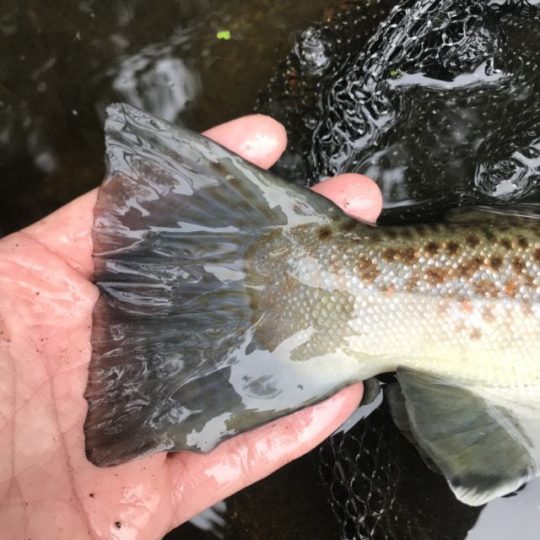

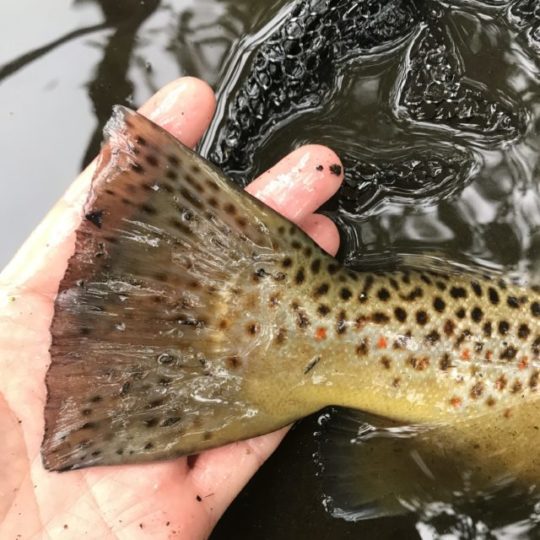
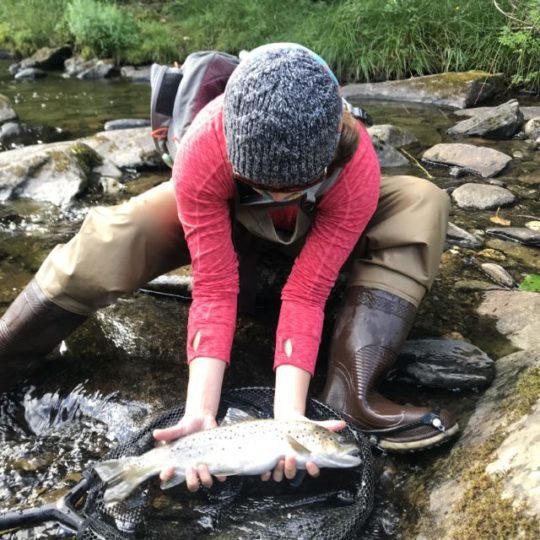
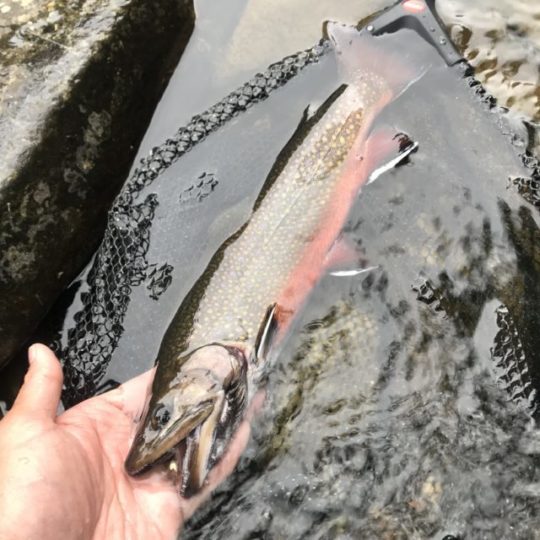

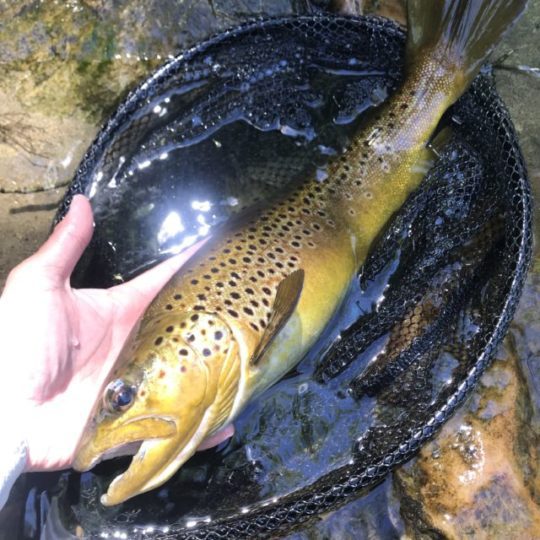
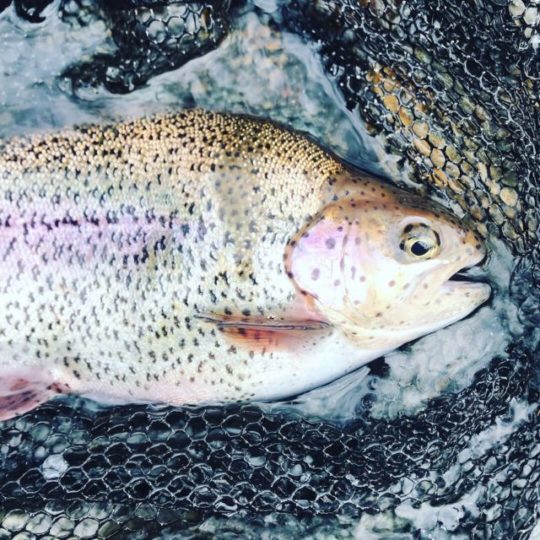


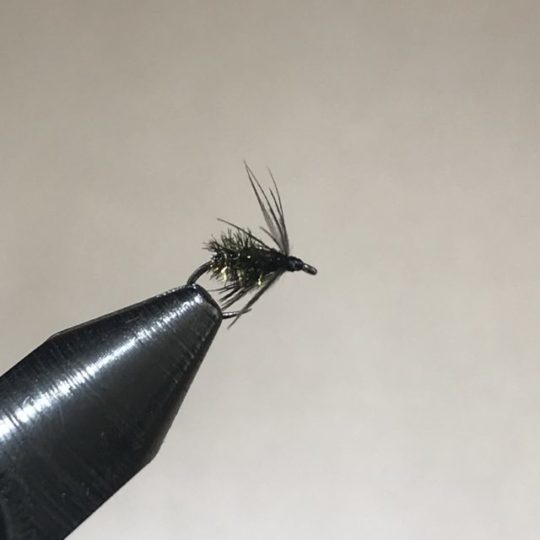
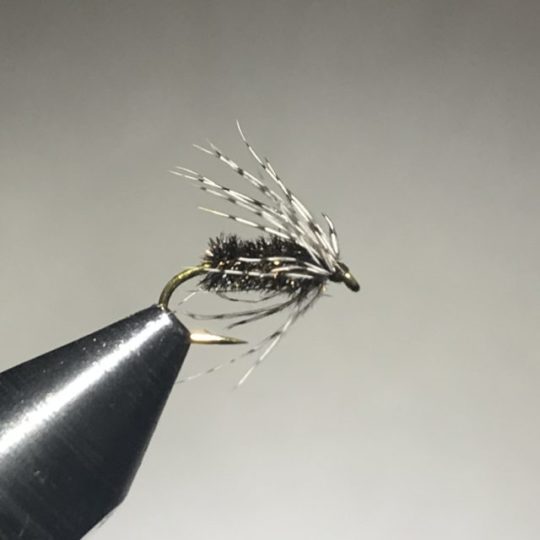
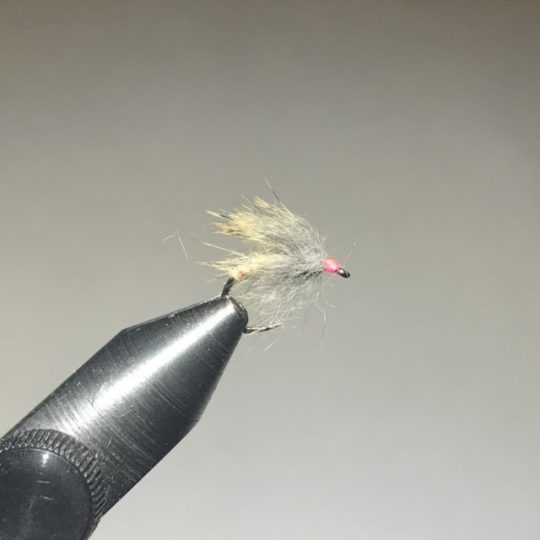


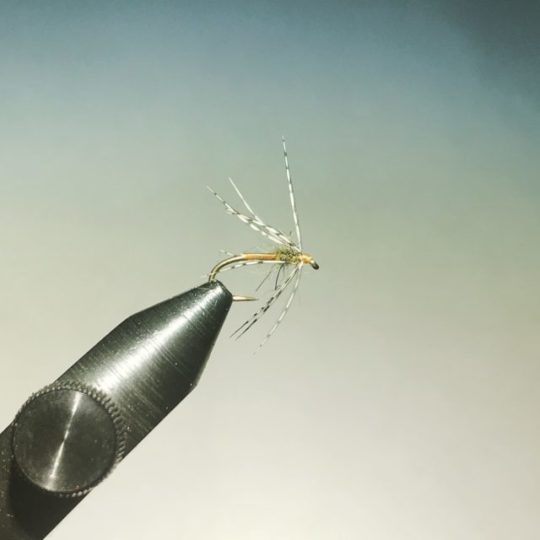




Nice review of the various Wet Fly techniques. Honestly I haven’t tight lined except very early this spring and have swung soft hackles with good success even/especially during hatches! Best fish a 24″+ Brown with a tan caddis pupa twitched on the swing while watching the fish. The techniques you described do really work and more anglers should give them an honest try.
Thank you!
Jo, I have fished soft hackles the majority of the time this year and have done pretty well. I think if I had only one fly to fish it would be a soft hackle partridge and orange. Despite all those Catskill dry flies I tied last winter, the only dry fly I have fished this year was the elk hair caddis and have had some explosive hits on it. Not sure what I will do with all those Catskills; too nice to throw out or take apart and retie something else. Maybe in the future I will dedicate a day to fishing them exclusively.
Regards, Sam
Sam, thanks for the comment. I rarely fish the Partridge and Orange and clearly need to tie up some! Glad to hear about all of the success!
Jo, I think this may have been your best post yet. You were able to boil down your success and make it very accessible. I have not fished wet flies at all ( I am still trying to puzzle out dries, nymphs and streamers!) After reading this I feel like I need to put in the time to add this technique to my approach. Thanks for the roadmap.
Thank you!
Jo the wet fly approach using split shot to get down is very effective for steelhead though in NY you are limited to one fly. Jim Kelso an amazing angler I had privilege of fishing with uses this approach for steelhead and always out fished me. Its worth exploring on your next steelhead trip. wiggle black stones swung near bottom have been a great winter steelhead presentation for me
Dan, thank you for the continued advice and support! I’ve tied up a bunch of flies and am eager for the trip. I’ve had to push my outing to early-December, however. I know November is “prime time,” but Dec. will have to do, as I have two school events for my kids and which I don’t want to miss. Guess I should bring the hand-warmers?
Great article as always! On the tapered leader are you starting with a 9’ 5x and cutting back a few feet for the tippet ring? seems like such a good all around setup as you can switch between dry/wet/indicator. Thanks
Thanks, James. I make my own leaders, but if I did use a 5x leader from the package, I would cut it back a few feet and add the tippet ring.
Do you ever change the position/location of the split shot?
Yes!